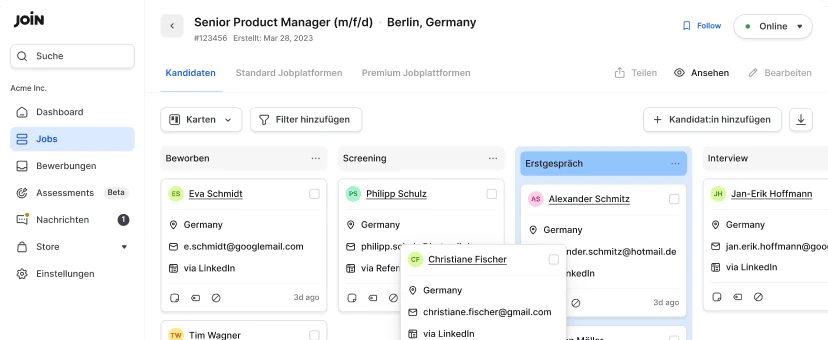5 critical steps you need to take after the meeting is over
Meetings shouldn’t end the second you leave the room. After a fruitful discussion, when motivation levels are high and the information is still in your mind the last thing you want to do is rest on your laurels. That’s why having a post-meeting checklist is critical.
These are the 5 steps that should be taken at the end of and after a meeting to ensure that the whole event wasn’t a waste of time.
-
Settle decisions (or make an action based on this)
If you entered a meeting with a solid agenda containing a list of decisions that had to be made, you should ensure that these decisions are settled before you leave the room.
However, if in an exceptional situation a decision can’t be reached in the meeting (if information that isn’t present is needed, for example) action should be taken in the meeting to deal with the delay as soon as possible. This action should then be shared with relevant stakeholders after the meeting and the decision should be reached by the end of the day. If this isn’t possible, then a deadline should be set so the decision isn’t forgotten about.When the decision is made outside of the meeting it should be shared with the meeting attendees either via email or a relevant Slack channel so that everyone is in the loop!
-
Note down actions
Most (productive) meetings will have at least a couple of actions and meeting takeaways that will need to be taken after the meeting is complete.
This is why it is essential to document these actions as soon as possible. Meeting minutes are a solid way to get a brief overview of what was aligned on within the meeting. However, encouraging individuals to take more detailed notes of what they need to do along with deadlines for these actions helps to keep the ball moving without interruption and increases accountability among the team.![]()
-
Sending out meeting notes
Meeting minutes should always be sent out right after the meeting to everyone present, as well as to anyone who was unable to attend the meeting.
However, for extremely complex meetings where many stakeholders are involved and lots of information is covered it may be a good idea to set up a collaborative document where everyone’s individual notes are shared as well. This way, the document can be used as a more detailed summary of the meeting.It can also function in the same way an FAQ would, giving attendees and colleagues the ability to check the notes for further clarity on discussion points. The document can be initially set up along with the meeting minutes and then sent out as part of the meeting recap email to be populated by attendees.
-
Ask for some quick meeting feedback
After the meeting, it might be worth asking for some feedback from your attendees. This doesn’t have to be done after every meeting. For example, it would be more trouble than it was worth to ask for feedback after a daily stand-up.
However, putting in monthly feedback sessions after bigger brainstorming meetings or decision-making sessions can help you understand what your colleagues are finding useful and what they think is wasting time.
Useful ways to do this include anonymous feedback forms, which can be quick and easy to set up and take minutes to complete, or through informal tools like Slack polls. Some example questions you can ask in your feedback sessions include:
- How do you find the length of our meetings? Could they be longer or shorter?
- In terms of our meeting agenda format, is there anything that could be added or taken away?
- In terms of our meeting minutes format, is there anything that could be improved? Are they too detailed? Not detailed enough?
- Do you find our meetings have too many participants? Not enough?
-
Follow up meeting
As a rule, we tend to avoid follow up meetings. Unless you’re working on a big project where recurring meetings are absolutely essential then any decisions and actions should be settled in the current meeting, rather than needing a meeting to follow up. As mentioned above, if the information is needed that can’t be found within the meeting then quickly rounding this up after the meeting can avoid further delays.
In cases where follow-up meetings are needed, they should be treated the same as the original meeting. This means producing a unique agenda for the meeting (although it may be worth bringing the meeting minutes from the first meeting along, too). The meeting should generally also have the same attendees, along with any new stakeholders as this will avoid any needed information not being present.
Timing a follow-up meeting correctly is essential. If the follow up is needed due to the fact that actions need to be taken before a project can be pushed forward, you need to give the attendees a chance to complete these actions.
This timing will be different in every situation, but scheduling your next meeting for around a week’s time will mean your team can complete the actions and return to the project while the subject is still clear in their mind.
The sooner you check the list, the better
The average adult makes around 35,000 decisions a day. Therefore, it is no surprise that we’re estimated to have forgotten 50% of the information we’re presented with within an hour of first hearing it. What can we learn from this? Well, the sooner we action our after-meeting checklist, the better.
Marking off these points while all of the meeting information is fresh in your mind will mean that you’re making the most of your colleague’s time by ensuring their ideas and contributions are accurately recorded.
Amber Denwood
Amber Denwood was a Content Manager at JOIN. She mostly wrote about employer branding, trying to help companies to understand how they can improve their image.



